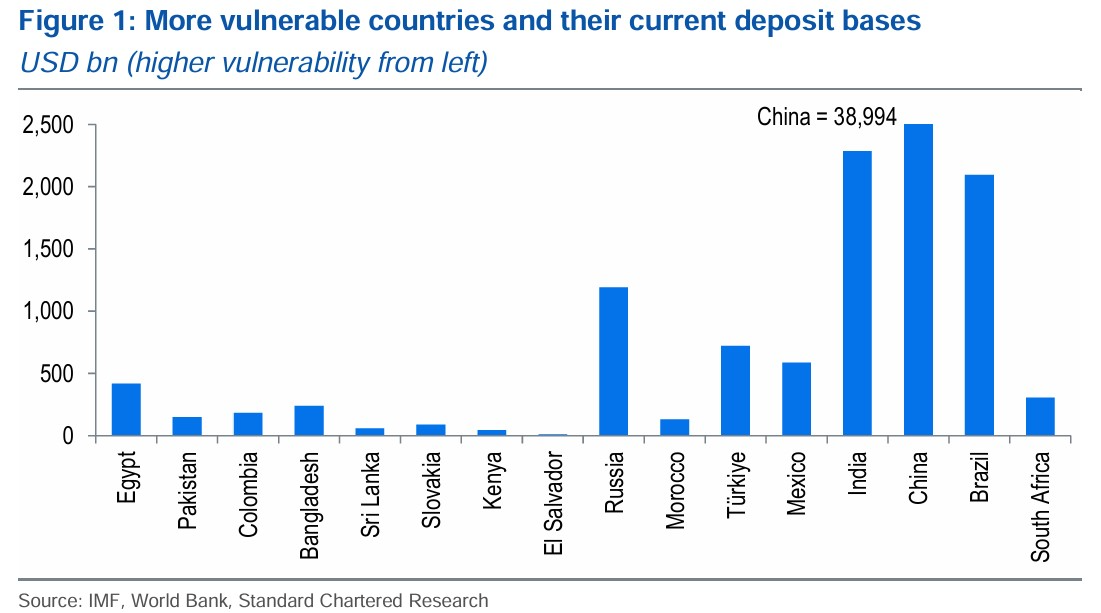
Multinational bank Standard Chartered anticipates that over $1 trillion may be withdrawn from emerging market banks and transferred to stablecoins by 2028, driven by increased demand for crypto assets pegged to the US dollar.
In a report released on Monday, Standard Chartered’s Global Research team indicated that global adoption of stablecoins is expected to rise, as payment systems and essential banking functions migrate towards non-bank channels.
As stablecoins become more popular in emerging markets, customers may use them for access to dollar-backed accounts. According to Standard Chartered:
“Stablecoin ownership has been more prevalent in EM than DM, suggesting that such diversification is also more likely in EM.”
The bank projects that usage of stablecoins for savings in emerging markets might grow from $173 billion to $1.22 trillion by 2028, signifying a potential $1 trillion exit from emerging market banks within the next three years.
 More vulnerable countries and their current deposit bases. Source: Standard Chartered
More vulnerable countries and their current deposit bases. Source: Standard Chartered
Two-thirds of stablecoin supply already in emerging markets
Standard Chartered notes that the most significant impact from stablecoins will likely occur in emerging markets, where access to US dollars has traditionally been restricted. By allowing consumers 24/7 digital access to USD accounts, stablecoins diminish credit risks compared to local bank deposits, as U.S. regulations require stablecoins to be fully dollar-backed.
The potential for a shift from banking systems to crypto alternatives introduces risks of deposit flight.
The bank estimates that two-thirds of the current supply of stablecoins is already stored in savings wallets within emerging markets, identifying countries with high inflation and large remittance inflows as particularly susceptible to this trend.
Stablecoins to combat inflation amid failing local currencies
Venezuela is often cited as an example of shifting from traditional banking to stablecoins. With inflation rates hovering between 200% and 300%, citizens are increasingly using stablecoins as a means of both transaction and value retention. Local merchants frequently quote prices in USDt (commonly referred to as “Binance dollars”), signifying that stablecoins are replacing the bolivar in everyday commerce amid hyperinflation.
Furthermore, in Chainalysis’ 2024 crypto adoption report, Venezuela ranked 13th with a 110% increase in crypto usage over the year. Numerous businesses, from small family-run shops to larger retail chains, are adopting crypto payment systems, utilizing platforms like Binance and Airtm.
In 2023, cryptocurrency transactions played a role in 9% of the $5.4 billion in remittances directed to Venezuela.
Beyond Venezuela, countries such as Argentina and Brazil are likewise engaging in the practice of using stablecoins like USDC and USDT to避开 inflation. A growing number of businesses in these regions have started to accept stablecoins as payment alternatives. In Brazil and Argentina, stablecoins account for approximately 60% of cryptocurrency transactions.
Related: GENIUS Act could mark end of banking rip-off: Multicoin exec
Magazine: Hong Kong isn’t the loophole Chinese crypto firms think it is


